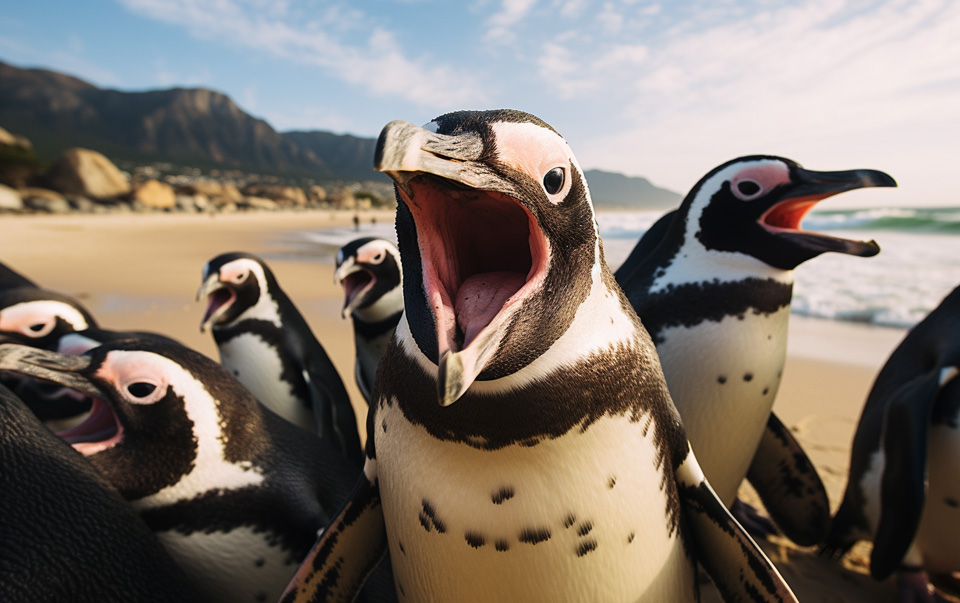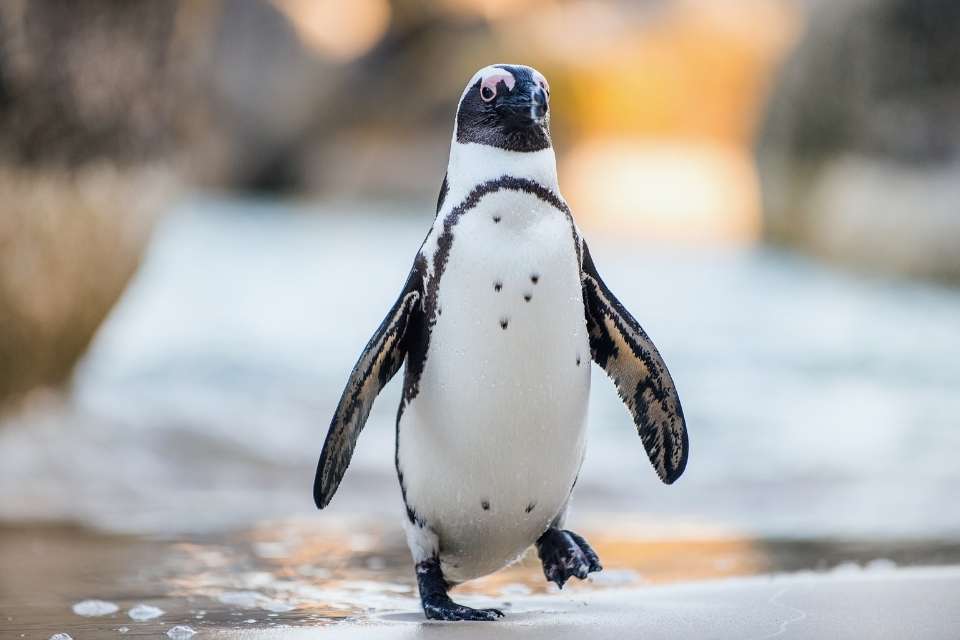Have you ever wondered if penguins have teeth? Well, penguins do not have teeth. They have a beak and papillae in their mouths that help them capture and consume their food.
In this article, we’ll explore whether penguins possess teeth, their unique oral anatomy, and the evolutionary reasons behind their toothlessness. Let’s dive in and discover the secrets of penguins’ mouths!
Key Takeaways:
- Penguins do not have teeth, but they have adapted to their marine lifestyle with specialized structures in their mouths.
- The beak of a penguin helps them grab and consume their food, while papillae on their tongues and the roofs of their mouths prevent fish from slipping out.
- Penguins’ toothless mouths are well-suited for their primary food source, fish.
- The evolution of birds, including penguins, is driven by the adaptation to flight, and teeth could interfere with weight distribution necessary for flight.
- Penguins, including African penguins, rely on beaks and papillae to efficiently capture and consume their prey.
The Dental Anatomy of Penguins
When it comes to the dental structure of penguins, there’s a unique adaptation that sets them apart from other animals. Penguins do not have teeth. Instead, they have a beak, similar to other birds, which helps them grab and eat their food.
The beak of a penguin is pointed and allows them to catch fish, their primary food source. While the absence of teeth might seem like a disadvantage, penguins have developed an ingenious solution to ensure efficient consumption of their prey.
Within the mouths of penguins, you’ll find an interesting feature called papillae. These are large spines that cover their tongues and the roofs of their mouths. The papillae play a crucial role in the penguins’ oral anatomy.
They help grip slippery fish and prevent them from slipping out of their mouths. The spines on the papillae resemble stalagmites and stalactites in a cave, providing a rough surface to hold onto their prey.
Additionally, these structures also serve as taste buds, allowing penguins to savor the flavors of their food.
The Role of Papillae in a Penguin’s Mouth
The papillae in a penguin’s mouth face backward, which enables them to grip fish effectively and prevent their prey from escaping. This adaptation is essential for penguins as they rely on fish for sustenance.
The papillae, acting as teeth-like structures, allow penguins to capture and consume their food efficiently. It’s fascinating to see how penguins have evolved unique adaptations in their mouths to compensate for the absence of teeth.
In summary, penguins possess a dental anatomy that is distinct from many other animals. Instead of teeth, they have a beak and papillae. The beak helps them catch and eat fish, while the papillae aid in gripping and handling their slippery prey.
Penguins have evolved specialized adaptations, such as these, to thrive in their marine environments and ensure they are well-equipped for their dietary needs.
The Evolutionary Reason Behind Toothlessness in Penguins

When it comes to penguins, we may wonder, do all penguin species have teeth? The answer is no. Penguins, including the majestic emperor penguins, do not possess teeth. But why is that? The evolutionary reason behind their toothlessness lies in their adaptation to flightless life.
As descendants of dinosaurs, penguins originated from species with teeth. However, as birds evolved and adapted for flight, teeth became a hindrance. Teeth are heavy and could interfere with weight distribution necessary for efficient flight. Since penguins are flightless birds, they no longer require teeth as part of their oral anatomy.
Instead of teeth, penguins have developed specialized adaptations to ensure efficient food consumption.
Their beaks play a vital role in capturing and consuming prey, primarily fish. The beak is designed with a sharp and pointed end, perfect for grabbing and gripping slippery fish.
Additionally, penguins have papillae, large spines on their tongue and the roof of their mouth, which act as taste buds and aid in holding onto food items while swallowing.
The Adaptation of Penguins without Teeth:
- Penguins have evolved to be flightless birds, and teeth could interfere with weight distribution necessary for efficient flight.
- The beak of a penguin is specialized for capturing and consuming prey, primarily fish.
- Papillae, large spines in the mouth, act as taste buds and aid in gripping and handling slippery food items like fish.
Although penguins may lack teeth, their oral anatomy presents unique adaptations that allow them to thrive in their marine environments.
By understanding the evolutionary reason behind their toothlessness, we can appreciate the remarkable adaptations penguins have undergone to fulfill their dietary needs.
Nature’s ingenuity is showcased through these flightless birds, which have found innovative ways to thrive and survive without teeth.
The Role of Papillae in a Penguin’s Mouth
Penguins may not have teeth, but their mouths are equipped with specialized structures called papillae that play a crucial role in their feeding process.
These papillae are large spines found on the tongues and roofs of penguins’ mouths, providing them with a unique and efficient way to capture and consume their prey, primarily fish.
The papillae in a penguin’s mouth serve multiple functions. Firstly, they act as taste buds, allowing the penguins to detect and savor the flavors of their food. Additionally, the papillae play a vital role in providing grip and preventing slippery fish from escaping.
Their backward-facing orientation ensures that once the prey is captured, it remains firmly in the penguin’s mouth, enabling successful swallowing.
The adaptation of papillae in penguins’ oral anatomy demonstrates their remarkable ability to thrive in their marine environments.
While not actual teeth, these structures fulfill similar functions, compensating for the absence of teeth and enabling penguins to consume their food with ease. The presence of papillae highlights the fascinating diversity and ingenuity of nature’s adaptations.
Teeth-Like Adaptations in Penguin Mouths
Even though penguins do not possess teeth, they have developed fascinating adaptations in their mouths to compensate for their absence. One of these adaptations is the presence of papillae, structures that resemble teeth in function and appearance.
These papillae play a crucial role in helping penguins grip onto slippery food items, such as fish, and guide them towards their esophagus for swallowing.
The papillae in a penguin’s mouth are equipped with spines that prevent prey from escaping back up the throat. While not actual teeth, these spines act as effective barriers, ensuring that the captured prey stays firmly in place during consumption.
These tooth-like structures are a remarkable example of how penguins have evolved specialized adaptations to thrive in their marine environments.
Another noteworthy adaptation in penguin mouths is the arrangement of the papillae. These spines face backward, which allows penguins to secure their prey and minimize the risk of it slipping away.
This orientation is crucial for penguins as they rely on their beaks and papillae to capture and consume their food efficiently. The unique structure of their mouths plays a vital role in ensuring the success of their hunting and feeding strategies.
The Importance of Teeth-Like Adaptations
The teeth-like adaptations in penguin mouths highlight the ingenuity of nature in finding alternative solutions to overcome biological limitations. The absence of teeth has not hindered penguins’ ability to feed on their primary food source, fish.
These adaptations, such as the papillae and their spines, have proven to be effective substitutes for teeth, allowing penguins to thrive in their marine habitats.
In conclusion, penguins may not possess teeth, but their mouths are far from toothless. The presence of papillae, with their tooth-like structures and gripping capabilities, showcases the remarkable adaptations of these aquatic birds.
These adaptations enable penguins to navigate their marine environments with ease, reinforcing their status as fascinating examples of nature’s adaptability.
The Mouth of African Penguins
African penguins, also known as black-footed penguins or jackass penguins, have a unique oral anatomy that is well-suited to their marine lifestyle. Unlike some other species of penguins, African penguins do not have teeth.
Instead, their beaks are made of keratin, which is the same material that makes up human fingernails. The beak consists of an upper and lower mandible that come together to form a sharp point, allowing them to grip and consume their prey with precision.
The absence of teeth in African penguins is compensated by the presence of specialized adaptations in their mouths. These adaptations include papillae, which are large spines that cover their tongues and the roofs of their mouths.
The papillae serve multiple functions, including helping the penguins grip slippery food items like fish and acting as taste buds. They also prevent the prey from slipping away, ensuring that the penguins can efficiently capture and consume their food.
In addition to their beaks and papillae, African penguins also have a unique tongue structure. Their tongues are muscular and flexible, allowing them to manipulate and move their food around in their mouths.
This helps them swallow their prey and ensure efficient digestion. Overall, the oral anatomy of African penguins showcases the remarkable adaptations they have undergone to thrive in their marine environments.
Conclusion
Penguins do not have teeth but have evolved specialized adaptations, such as beaks and papillae, to compensate for the absence of teeth. These adaptations allow them to efficiently capture, grip, and consume their prey, primarily fish.
The dental anatomy of penguins is unique and well-suited for their marine lifestyle. The beak helps them grab and eat their food, while the papillae on their tongues and the roofs of their mouths prevent the fish from slipping out.
Understanding the oral anatomy of penguins helps us appreciate the remarkable adaptations these birds have undergone to thrive in their environments. Penguins are a testament to the diversity and ingenuity of nature, showcasing how different species have adapted to their specific niches.
FAQ
Do penguins have teeth?
No, penguins do not have teeth. They have a beak and papillae in their mouths that help them capture and consume their food.
What is the dental anatomy of penguins?
Penguins have a beak, tongue, and papillae on the tongue and roof of their mouths. These adaptations aid in gripping and handling their slippery prey, such as fish.
Why don’t penguins have teeth?
Penguins do not have teeth because the evolution of birds, including penguins, is driven by adaptation to flight. Teeth could interfere with weight distribution necessary for flight.
What is the role of papillae in a penguin’s mouth?
Papillae in a penguin’s mouth help grip and prevent prey from slipping out. They also serve as taste buds and aid in capturing and consuming fish, the penguin’s primary food source.
Do penguins have teeth-like adaptations?
While penguins do not have actual teeth, the spines on their papillae resemble teeth-like structures. These adaptations help penguins efficiently consume their prey.
What is the oral anatomy of African penguins?
African penguins have a beak made of keratin and do not possess teeth. The beak and papillae aid in gripping and consuming their prey, primarily fish.


